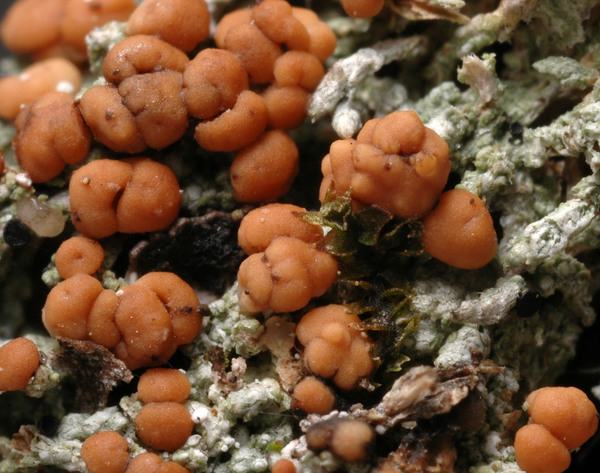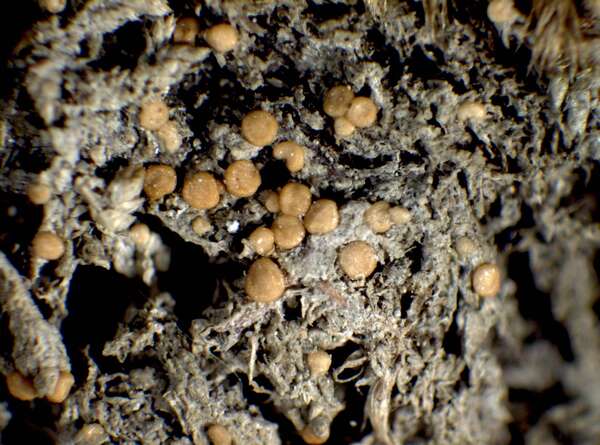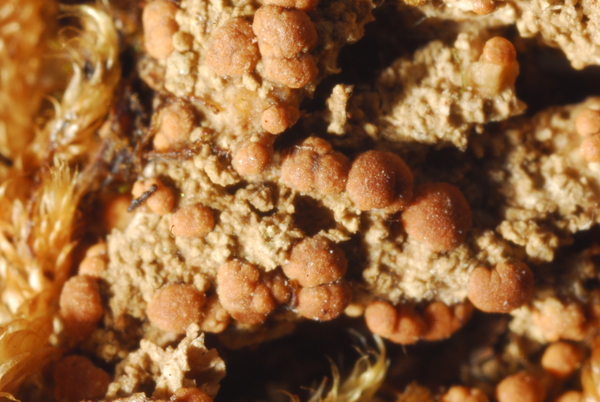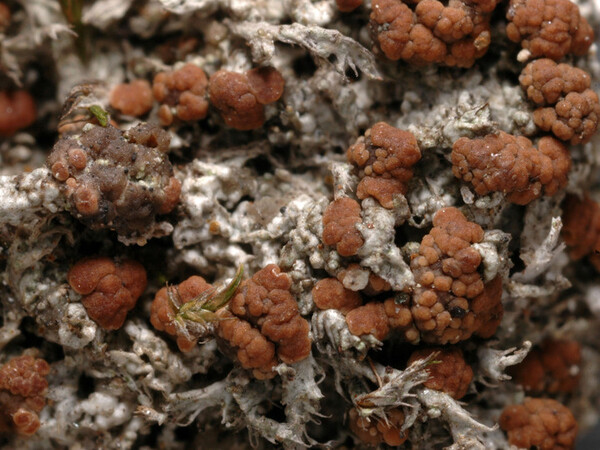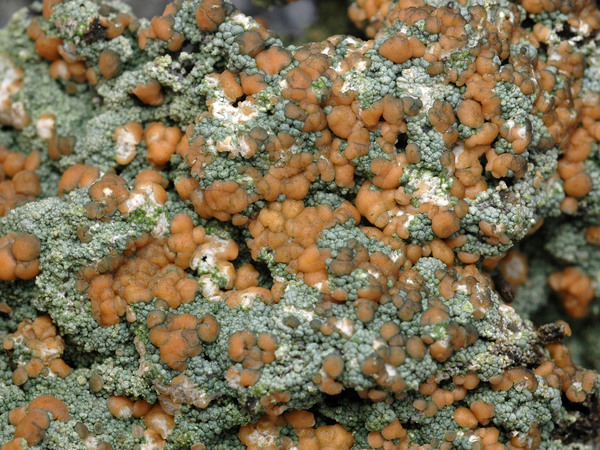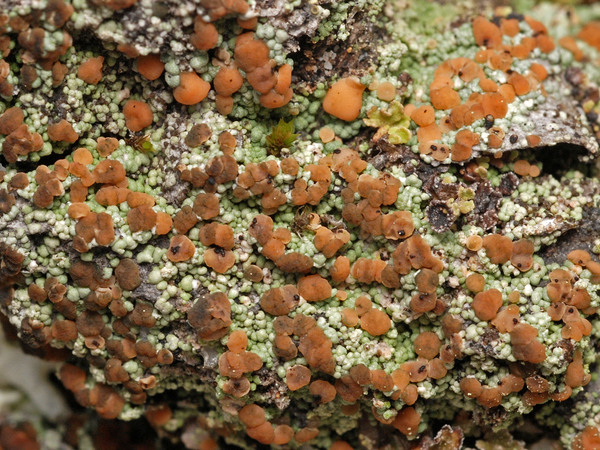Biatora vernalis (L.) Fr.
K. Svensk. Vetensk.-Akad. Handl.: 271, 1822. Basionym: Lichen vernalis L. - Syst. Nat., 3: 234, 1768.
Synonyms: Bacidia vernalis (L.) Clauzade & Rondon comb. inval.; Biatora sphaeroides var. vernalis (L.) Rabenh.; Bilimbia vernalis (L.) Trevis.; Lecidea vernalis (L.) Ach.; Patellaria vernalis (L.) Spreng.; Pyrrhospora vernalis (L.) M. Choisy; Secoliga vernalis (L.) Norman
Distribution: N - Frl (TSB 21127), Ven (Nascimbene & Caniglia 2003c), TAA (Hinteregger 1994, Nascimbene & al. 2007b, 2022, Nimis & al. 2015), Lomb, Piem (Tretiach 1997, Isocrono & al. 2003), VA (Piervittori & Isocrono 1997, 1999), Lig (Brunialti & al. 1999, Watson 2014). C - Tosc (Printzen 1995, Printzen & Palice 1999, Benesperi & al. 2007), Laz (Ravera 2006), Abr. S - Camp (Aprile & al. 2003b), Bas, Cal (Puntillo 1996).
Description: Thallus crustose, episubstratic, greenish to grey-green (turning brownish in the herbarium), consisting of 0.1-0.3 mm wide, crowded, granular warts forming an up to 10 cm wide crust. Apothecia biatorine, sessile with constricted base, orange-brown to reddish brown, rarely pale ochre, single or often confluent, 0.3-0.6(-1.5) mm across, with a convex, sometimes tuberculate, epruinose disc, and a paler, very thin and soon excluded proper margin. Proper exciple 50-100 µm wide laterally, of radiating hyphae with more or less cylindrical lumina, colourless or more or less uniformly pale brown; epithecium scarcely differentiated from the hymenium; hymenium colourless or pale brown in upper part, 45-70(-95) µm high; paraphyses coherent, simple or sparingly branched, 0.7-2 µm thick at mid-level, the apical cells up to 4 µm wide; subhymenium 40-70 (-120) μm high; hypothecium 95-300 μm high, colourless or pale orange-brown. Asci 8-spored, clavate, with a K/I+ blue apical dome penetrated by a narrow, K/I– apical cushion surrounded by a narrow, deeply K/I+ blue zone, the wall K/I- but surrounded by an I+ red-brown, K/I+ blue outer layer, the ocular chamber relatively small, Biatora-type. Ascospores 1-celled (rarely 1-2-septate), hyaline, ellipsoid, (10-)12-20(-25.5) x 4-6(-7) µm. Photobiont chlorococcoid. Spot tests: thallus K-, C-, KC-, P-, UV-. Chemistry: without lichen substances.
Note: a mostly boreal-montane, circumpolar species ranging from northern Scandinavia to the Alps, Pyrenees and the Balkan mountains, becoming progressively rarer southwards. It is found on epiphytic bryophytes and bark in humid montane forests; reports from plant debris and acid soil most probably refer to B. subduplex.
Growth form: Crustose
Substrata: bark, soil, terricolous mosses, and plant debris
Photobiont: green algae other than Trentepohlia
Reproductive strategy: mainly sexual
Commonnes-rarity: (info)
Alpine belt: absent
Subalpine belt: very rare
Oromediterranean belt: rare
Montane belt: extremely rare
Submediterranean belt: absent
Padanian area: absent
Humid submediterranean belt: absent
Humid mediterranean belt: absent
Dry mediterranean belt: absent

Predictive model
Herbarium samples
Growth form: Crustose
Substrata: bark, soil, terricolous mosses, and plant debris
Photobiont: green algae other than Trentepohlia
Reproductive strategy: mainly sexual
Commonnes-rarity: (info)
Alpine belt: absent
Subalpine belt: very rare
Oromediterranean belt: rare
Montane belt: extremely rare
Submediterranean belt: absent
Padanian area: absent
Humid submediterranean belt: absent
Humid mediterranean belt: absent
Dry mediterranean belt: absent

Predictive model
| Herbarium samples |
 INDEX FUNGORUM
INDEX FUNGORUM
 GBIF
GBIF
 DOLICHENS
DOLICHENS
